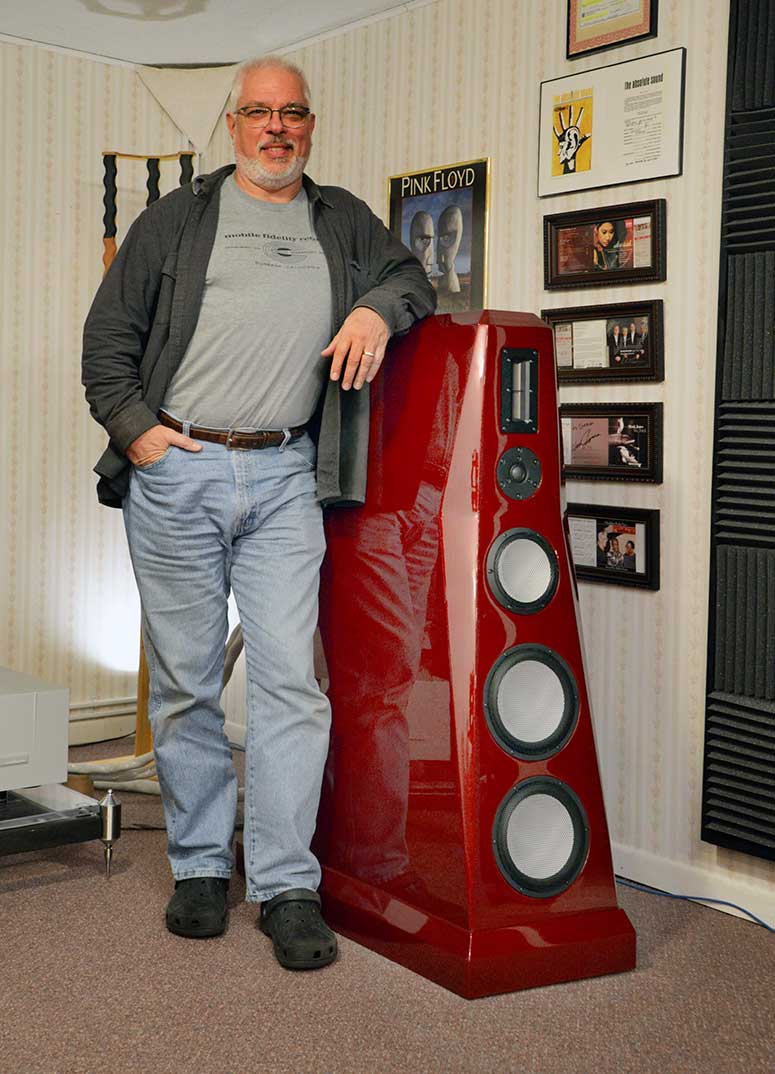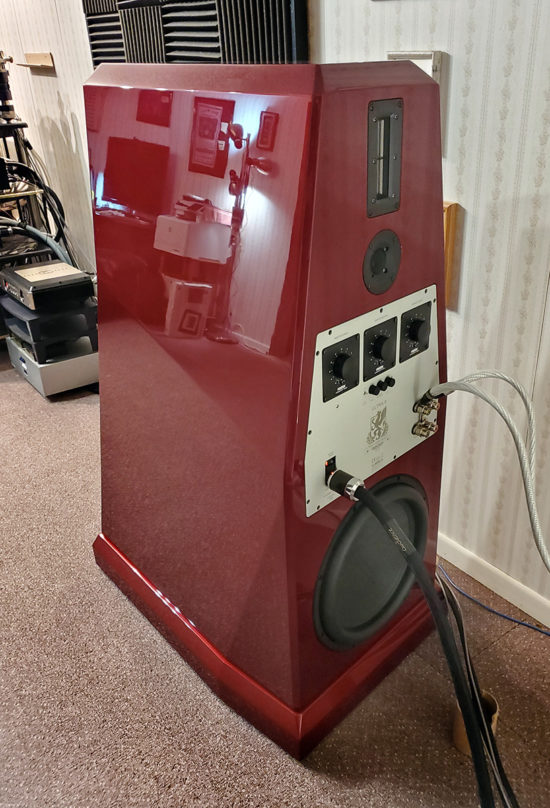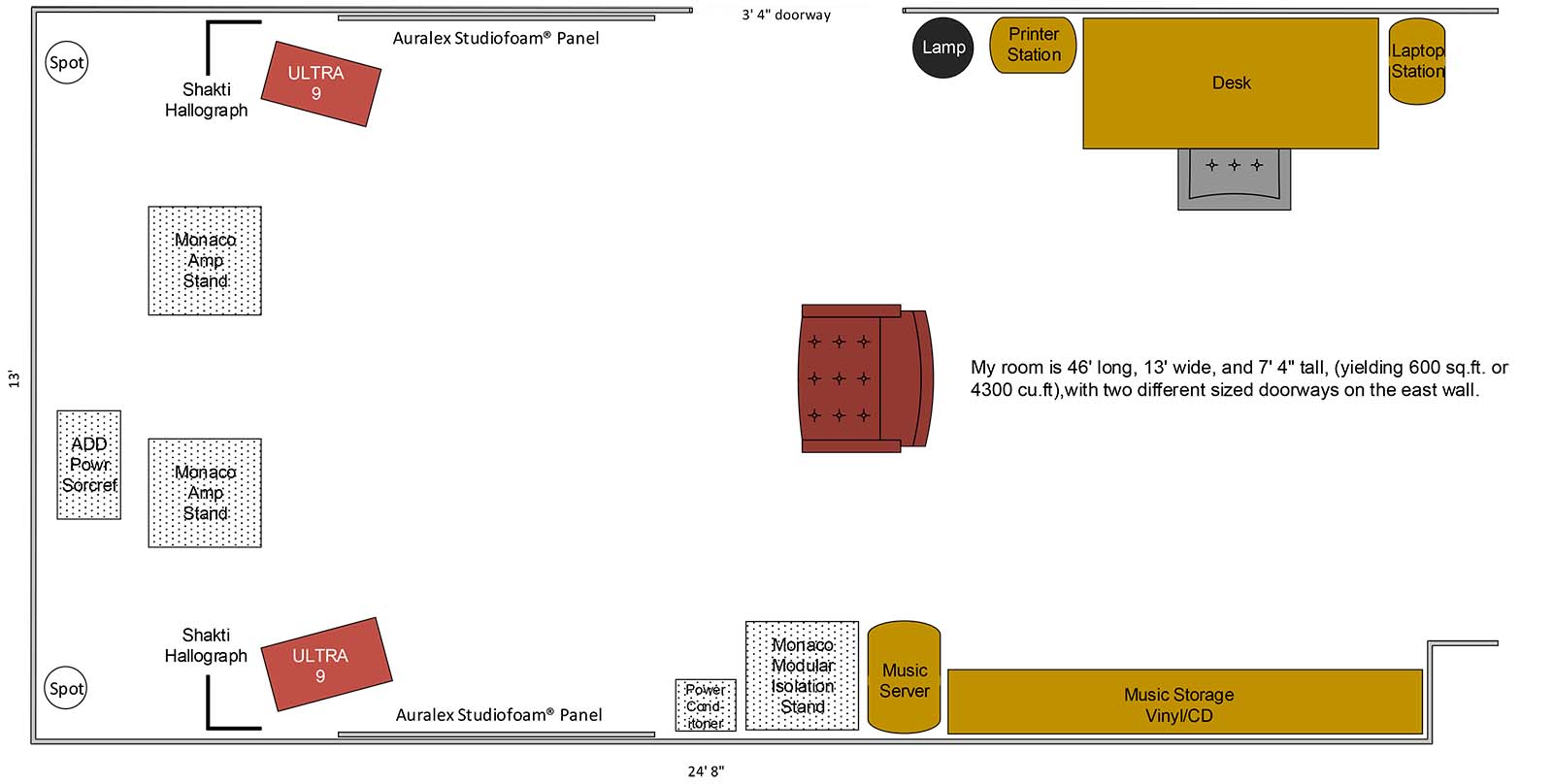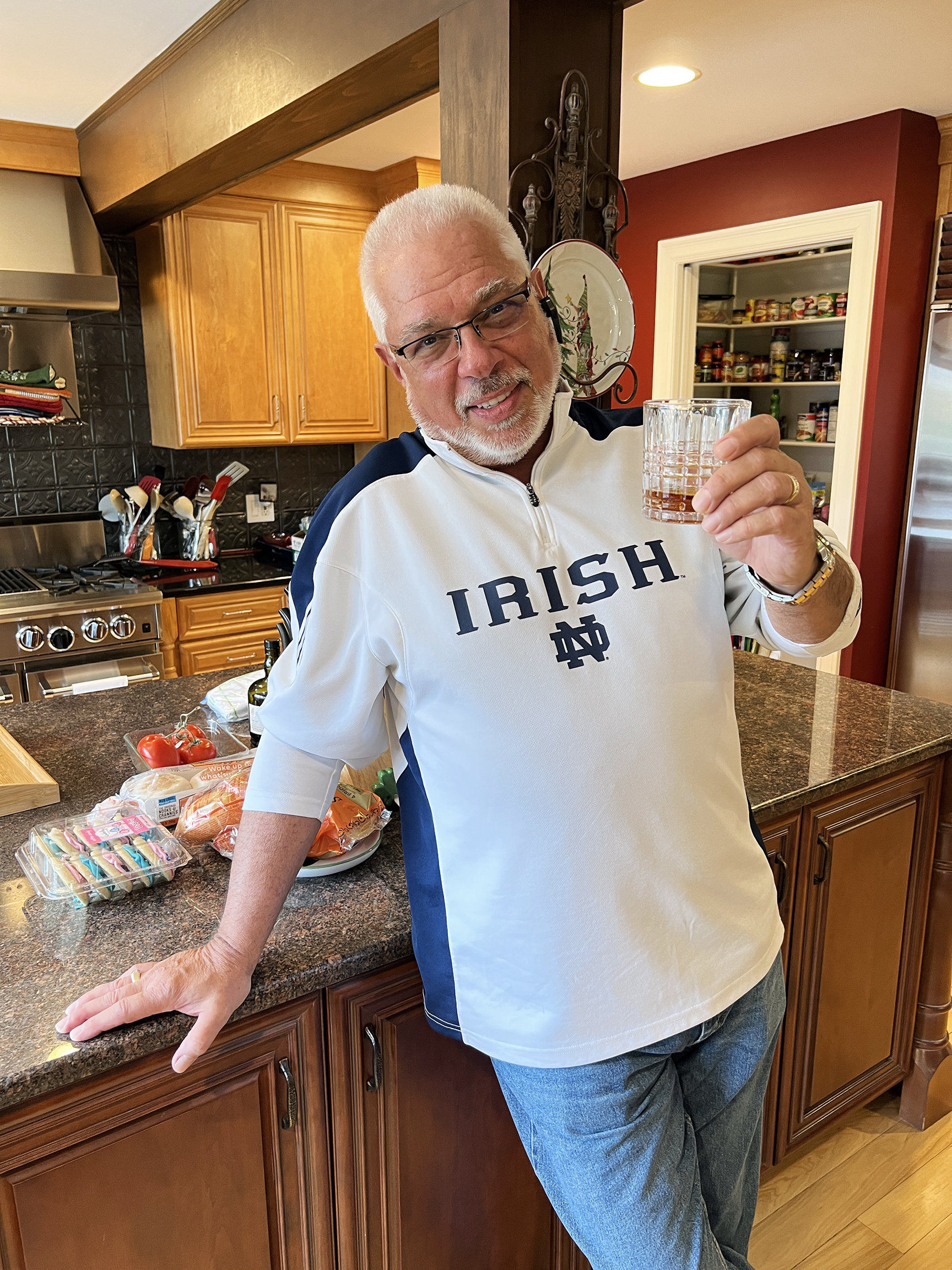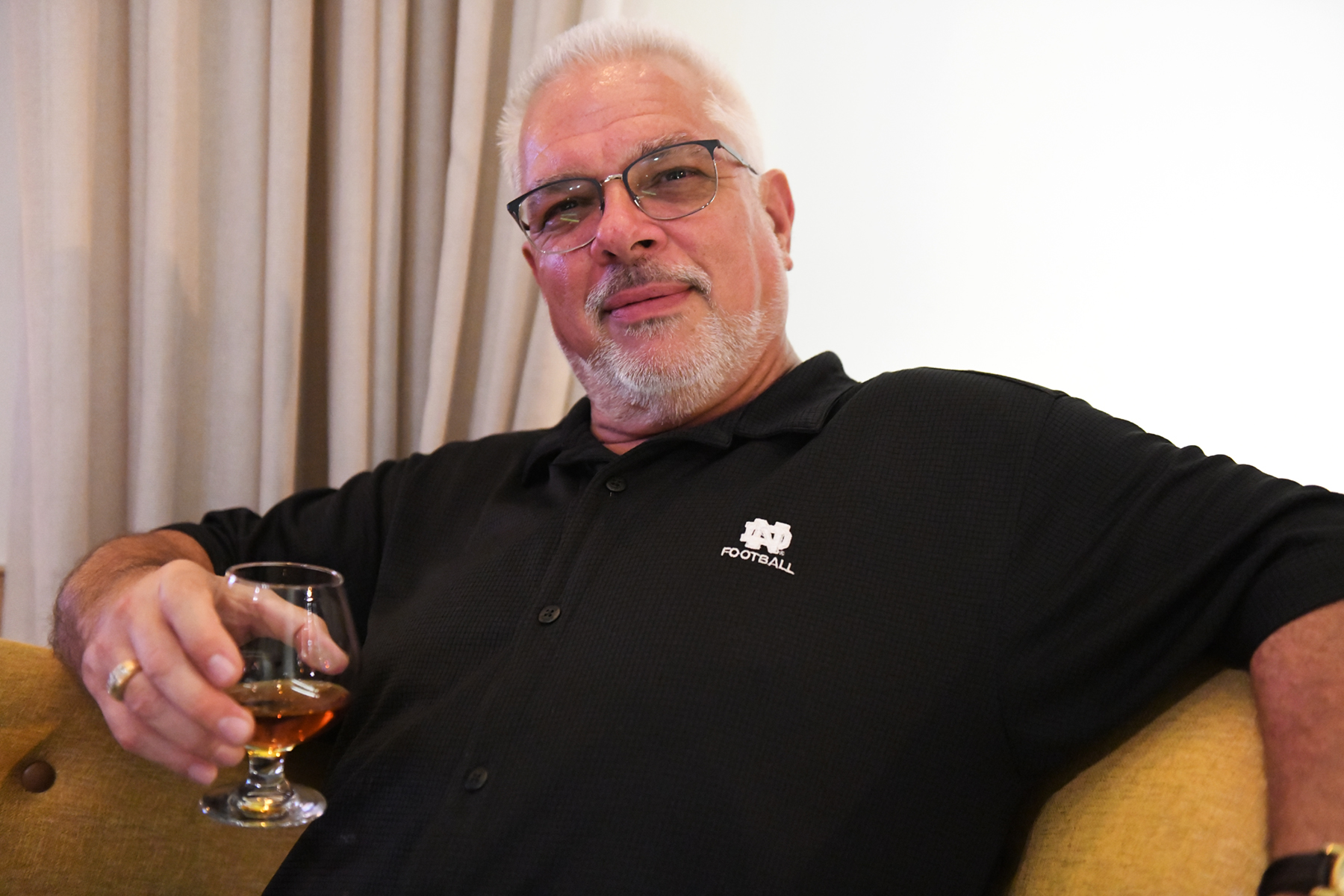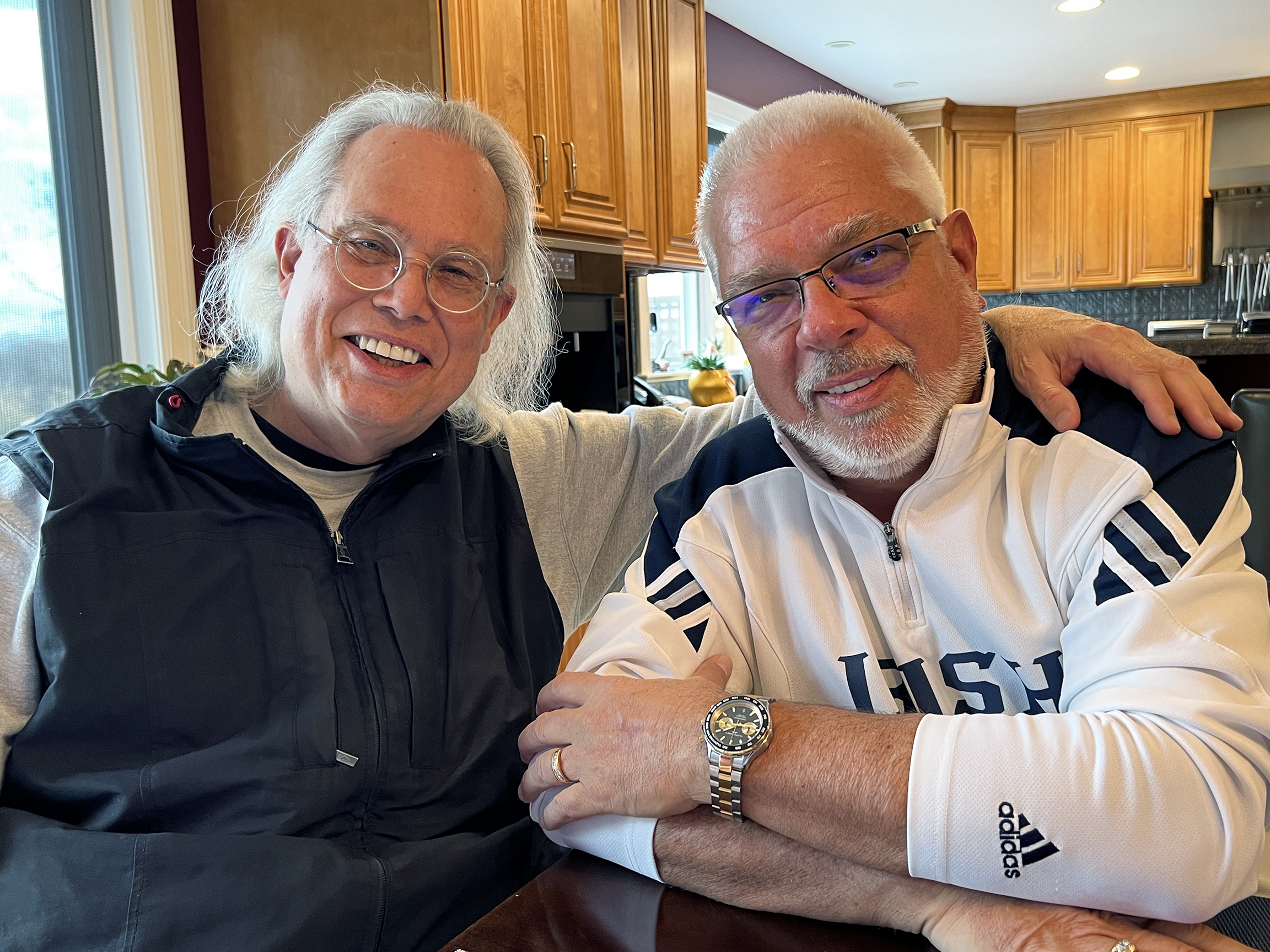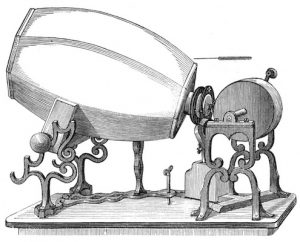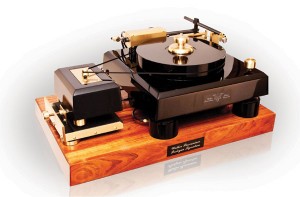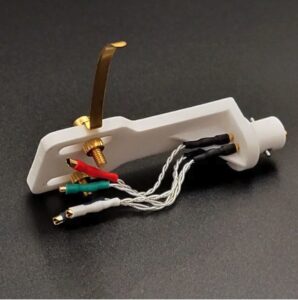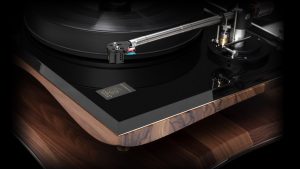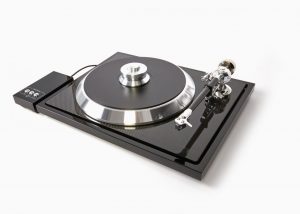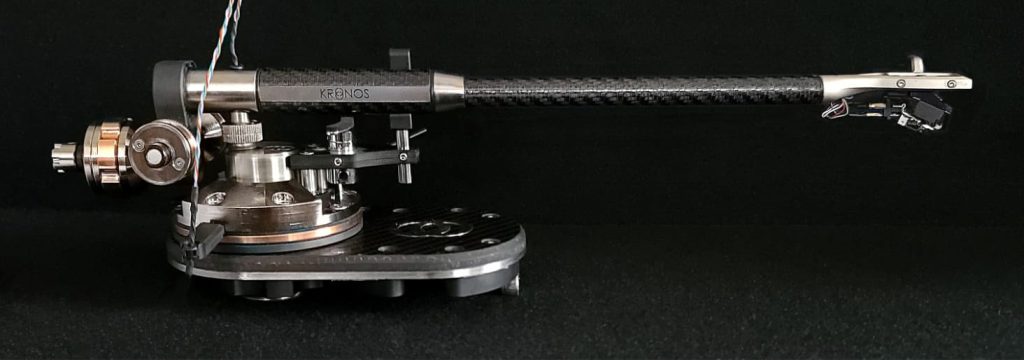
Three weeks ago, I had the pleasure of introducing you to the two new KRONOS Resonance Suppression tonearms, the Kronoscope RS and the Discovery RS. In that episode's interview with Louis Desjardins, recorded in his factory in Montreal, he indicated that he would be sending me one of the new Discovery RS arms to install on my KRONOS Pro Limited Edition turntable so that I could provide a more personal, detailed report on this innovative arm's performance!
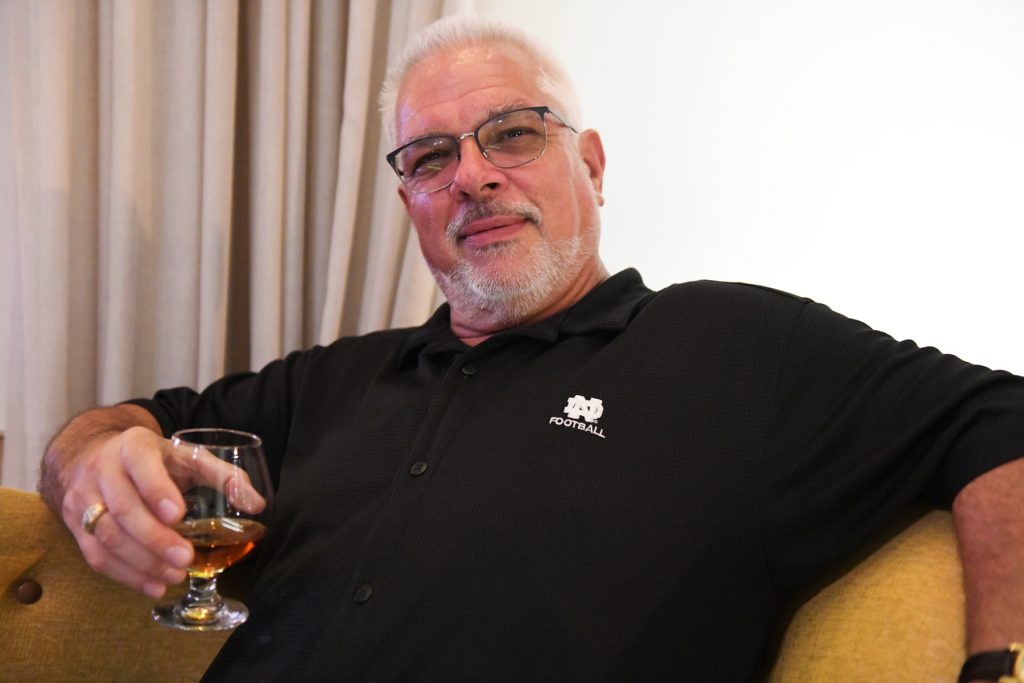
Greg Weaver: a portrait. Chicago, IL, 2018 (Photograph and image processing by David W. Robinson)
A beautiful new Discovery RS tonearm landed Friday, April first while I was still in Atlanta for my private audition of the Von Schweikert Audio ULTRA 7 loudspeakers at The Audio Company, which were the subject and focus of last week's episode 70. By Monday evening, April fourth, I had installed it in place of my KRONOS twelve-inch Black Beauty tonearm.
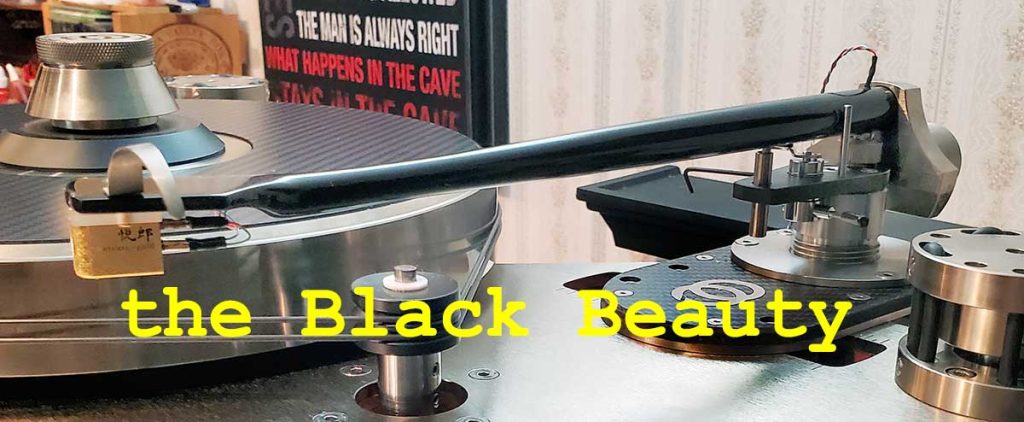

If you saw Episode 69 of my the audio analyst YouTube series, what follows will come as no surprise. If you didn't—spoiler alert! I simply could not believe the degree and scale of improvement to the entire sonic tapestry this arm was revealing. The improvements were ANYTHING but subtle, actually approaching the level of performance that I had first noted when I heard the game-changing Discovery turntable last August. How can a tonearm have SUCH an impact on the resultant performance of a turntable? More to the point, what makes this one so special?
Most of you will recognize that a turntable system's sole, intricate purpose is to accurately retrieve every nuance and subtle inflection that was captured by the original recording and embedded as groove modulations stamped into the vinyl puck that became the record you place on your turntable platter and to convert the subsequent vibrations that it generates when transcribed with our turntable system back into an analog electrical signal.
The goal and challenge for any turntable design may be seen to be maximizing the fidelity, the accuracy and quality, of the retrieval of that inscribed information, which will be largely determined by a turntable/tonearm/cartridge system's ability to isolate the intended signal embedded in the groove from all other non-groove borne parasitic vibrations. Such unwanted and degrading parasitic vibrations come in three basic varieties, those generated by the mechanical components of the turntable system itself, its motors, bearings, gears, belts, etc., those created and transmitted from environmental sources such as the speaker system, footfalls, or electrical transformers, and finally, as vibrations transmitted to the vinyl record itself from the physical gliding of the stylus tracing the LP groove.
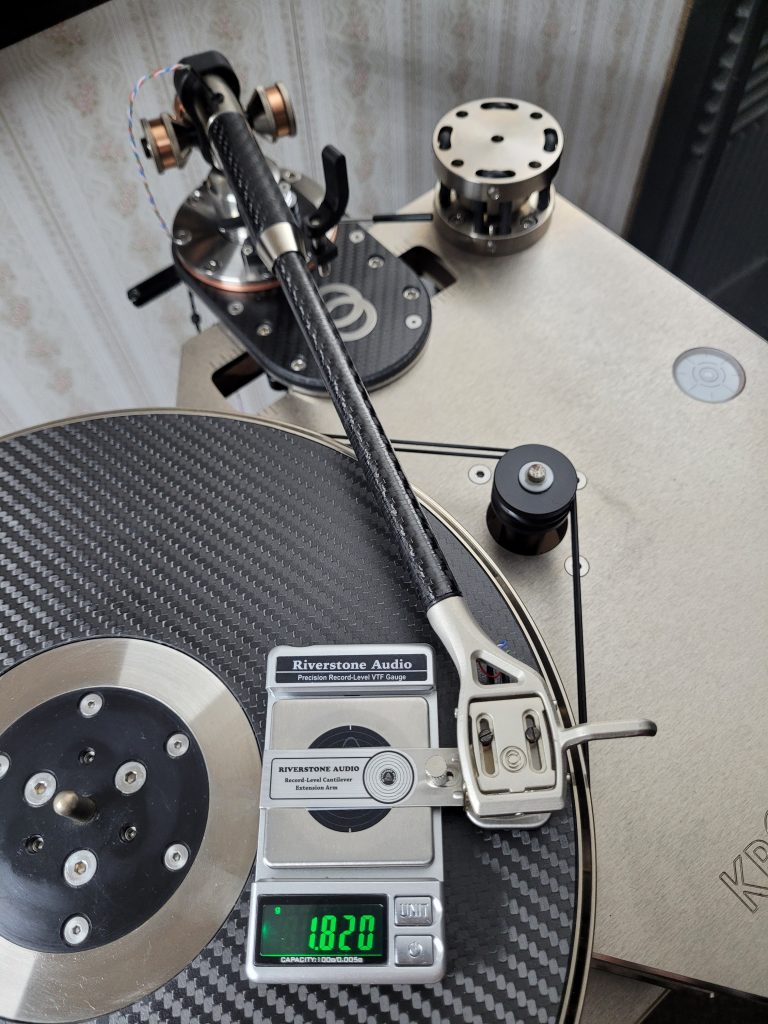
Now, all these superfluous and undesirable vibrations simply generate distortions and noise. They may be either additive, increasing or magnifying the noise floor and sound colorations, or subtractive, altering the musical information due to phase cancellation from the delayed vibration feedback. The objective of the turntable designer should therefore be to use every means possible to reduce or eliminate all forms of parasitic vibrations to their lowest possible level within the turntable system.
Louis' first attempt at implementing a massive reduction of parasitic vibration and distortion came with the development of his enormously successful contra-rotating, suspended dual platter approach realized with the original Pro Limited-Edition turntable, officially launched at CES 2012. He followed up with an even more affordable implementation of this technology with the Sparta, which I not only reviewed for the absolute sound in 2015 but subsequently purchased as my reference turntable. The indisputable effectiveness of this elegantly simple yet extraordinarily effective and patented technology earned him both my award for "Turntable of the Decade, two-thousand eleven through two-thousand twenty," and my recognition that this superbly effective technological innovation represented the most significant advance in turntable design to be implemented over the past two decades.
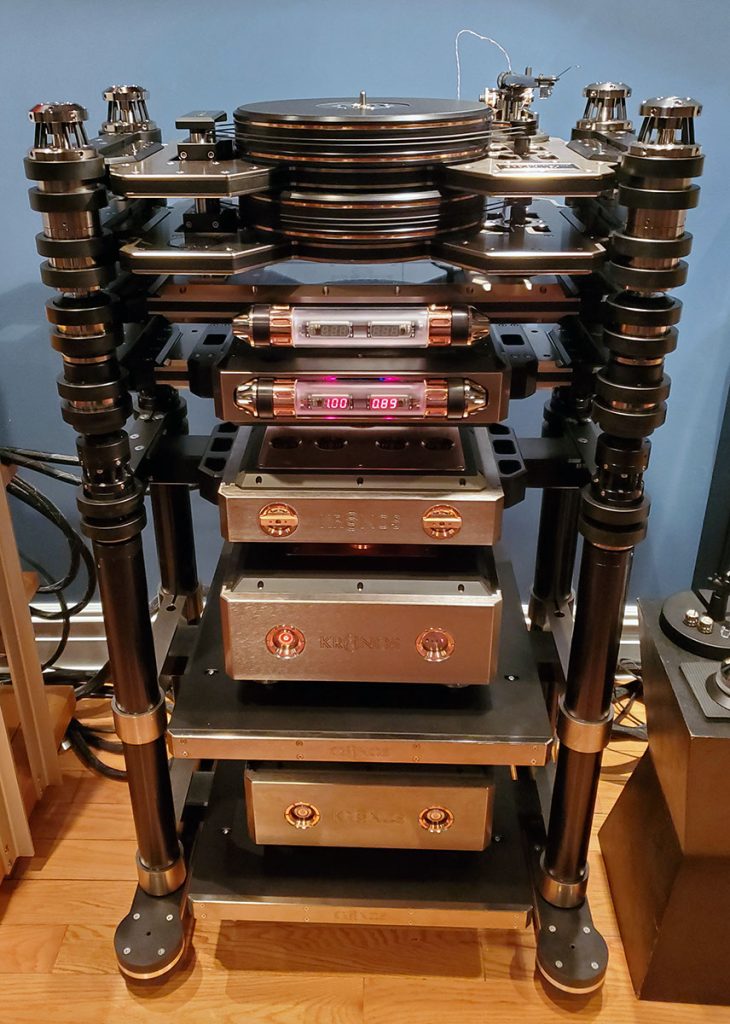
His next advance in the further elimination of such parasitic vibration came with the introduction of the Discovery turntable last fall, which was the subject of my episode 56. Now, as the first journalist to get to hear and report on this new and benchmark redefining transcription system in late August last year, I not only announced that what I had heard re-established what was possible for the future of reference level LP playback, but that the KRONOS Discovery turntable system, in fact, constituted a class of its own, and was the very definition of the term sui generis.
Though I initially was accused of hysterical hyperbole, as more journalists, industry professionals, and reviewers had the opportunity to hear Discovery for themselves, that pushback slowed. And it stopped entirely after respected journalists as prominent as Dr. David W. Robinson, Positive Feedback's Editor-in-Chief, Maurice Jeffries, Positive Feedback contributing writer and reviewer, and Alan Sircom, Editor-In-Chief of the absolute sound's British magazine Hi-Fi+, all expressed their version of my original pronouncement, that the KRONOS Discovery completely reset the bar defining what may be accomplished with LP playback in a hyper-audio two-channel system.
In fact, at the conclusion of Dr. David W. Robinson's appraisal in an audio triangulation of essays on Discovery's accomplishment, published at Positive Feedback in November of 2021, he sums up his experience by saying… "The Discovery turntable system is a historic achievement in the history of fine audio. The Discovery represents a one-in-a-generation advance in the audio arts. Louis Desjardins has, in my estimation, created a true watershed design in high-end audio that will set a benchmark for all other turntable designers to examine and reflect upon in their own work."
But guess what? As good as the full Discovery turntable solution was, just eight months after its introduction, Louis has somehow found a way to raise and reset that bar yet again!
In early December of last year, Louis called me to bring me up to speed on an innovative approach and methodology he had been developing that should affect further suppression and mitigation of the inherent noise, colorations, and distortions of the pickup arm itself. During this call, he was unable to conceal the genuine excitement and inspiration in his voice as he was describing this remarkable original approach to resonance control.
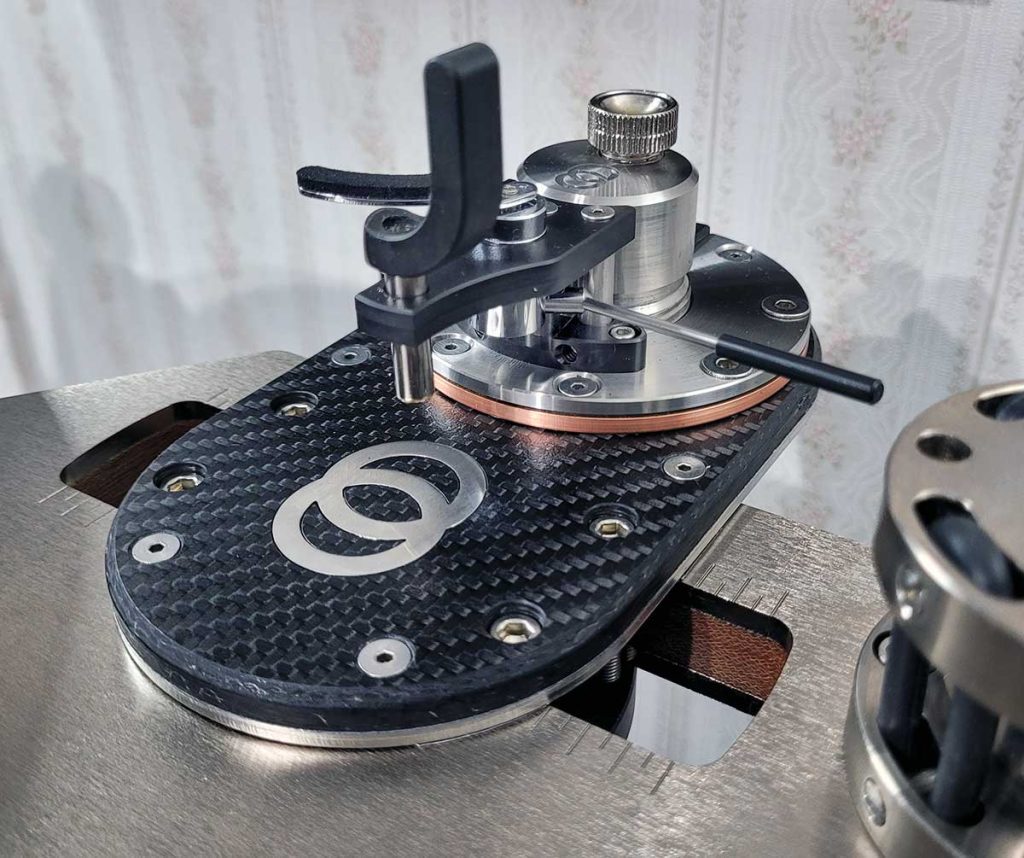
While the original Kronoscope base, unipivot, and counterweight mechanisms had already received the same innovative improvements as the rest of the Discovery platform itself, he had come to believe that there may be room for drastic improvement of the arm wand itself. By implementing the technologies he had applied building Discovery, he had come up with a system of technologies and approaches that would effectively allow for the interruption and minimization of wave transmission throughout the entire length of the tonearm itself.
Much as he had done with the Discovery turntable, he began by using multiple parts of unique and disparate materials in conjunction with leveraging specified physical placements and spacing, in essence, creating a system of controlled interruptions and gapping. A significant component of this patent-pending approach is the unique suppressor assembly developed to nearly obliterate resonances in each of the three traditional angular axes, X, Y, and Z. In addition, the entire arm utilizes his soft clamping techniques, a connection method he developed for the Discovery turntable platform.
Now, the RS approach is an utterly new, unique, patent-pending technology, not just some clever or catchy gimmick or name. Applying this technology, Louis has found a way to create a rigid and lightweight, yet not solid, pickup arm, in which mechanical waves are consistently interrupted, preventing them from propagating and denying their ability to subsequently reinforce and build up through the entirety of the arm during playback.
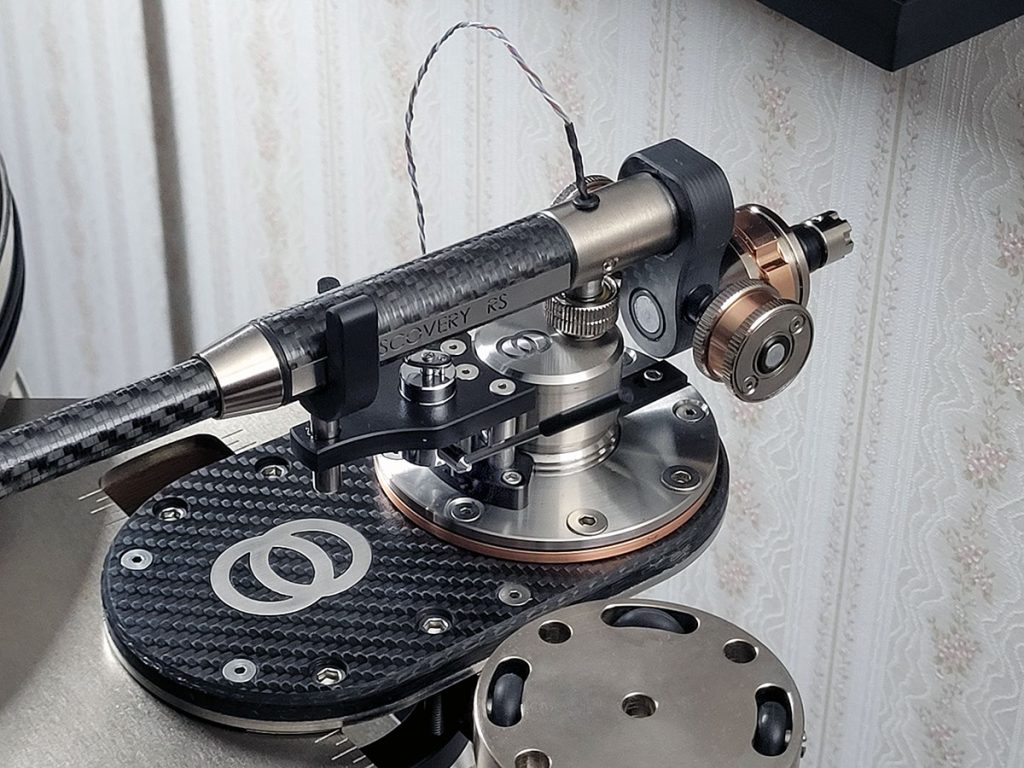
Much in the same fashion as a gun suppressor, or "silencer," reduces the sound output produced when the gun is fired, because the arm utilizes multiple, dissimilar parts, specifically designed interruptions, and a myriad of materials and assembly approaches applied over its entire length, this inspired and innovative RS technology forces the dissipation of waves of mechanical energy as they are transmitted from one section of the wand assembly to the next, preventing their ability to propagate and travel through the length of the arm wand. It not only has the effect of significantly diminishing the noise the arm itself imposes on playback by its own fundamental resonance, but it also prevents the buildup of such waves, making them unsustainable, preventing their foreseeable intensification or reinforcement over time.
The resultant sonic rewards are starkly apparent from the first needle drop! The first thing I noticed was the monumental reduction of what we have always called "groove rush." While I had experienced this remarkable trait when first listening to the full Discovery Analog Solution last August, I was TOTALLY unprepared to realize this dramatic improvement with my Pro! Suddenly, something we had always referred to as "groove rush," the "noise" we had attributed to the mere action of the stylus tracing the groove wall, was reduced to the point of my considering it effectively gone! I'm talking about nearly complete silence in the space between cuts as well as the lead-in groove. Pre-echo was all that you notice now with pristine LPs… With these two new tonearms, the twenty-four thousand dollar Discover RS, and the more affordable fourteen-thousand dollar Kronoscope RS, Louis has vanquished our older accepted beliefs, exposing the cause of this previously rampant distortion to be what it REALLY is, unmanaged tonearm resonance.
Next, the lowest octaves of the music, from say approximately 80Hz and down, had not only more refined, better-delineated extension, but a more faithful sense of speed and texture, allowing for a much more immediate and live presentation. Double bass pizzicato, deep rock, blues, and jazz bass guitar runs, bass drums and tympani, pipe orangs, and even the lowest registers on an acoustic piano, had newfound speed, definition, and texture.
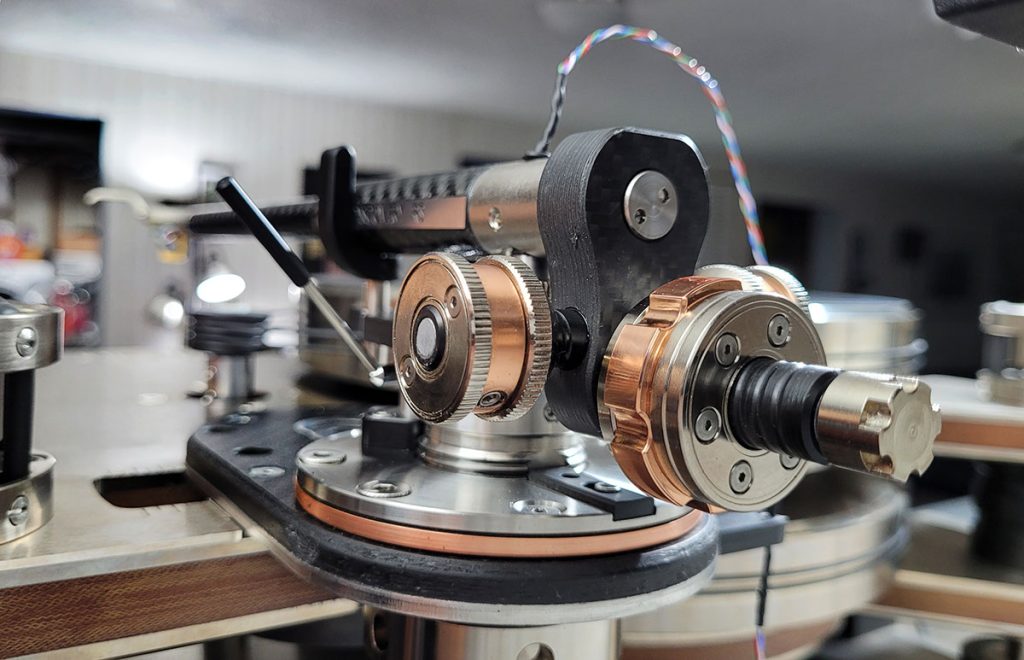
As with the lowest frequency improvements, the entire musical spectrum had received a substantial advancement in its ability to portray density of color, overall tonal neutrality, as well as midrange and upper midrange liveliness.
Broadband, I was hearing an unnerving evolution of more vibrant color and more expressive texture, allowing me to note previously unrealized and remarkably subtle inflections in instrumental voicing, tonality, and texture.
The Discovery RS tonearm's ability to deliver considerably more nuanced inflection not only affects timbre and tonal correctness, but brings to bear an amazing sense of focus, specificity, and spatial rendering. I've never "heard" more light shown into the rear corners of the soundstage, nor witnessed the recreation of more substantive, corporal bodies of instruments, or more apparent dimensional specificity, left to right, front to back, and especially with individual heights, top to bottom.
And don't get me started on its ability to portray authentic scale, with both large-scale macrodynamic expressiveness and small-scale microdynamic eloquence. All in all, the Discovery RS tonearm experience epitomizes the premise that you can't always recognize what sonic debris you're listening to until it has been removed.
In my five decades of experience in this industry, this new KRONOS Discovery RS tonearm, and to only some slightly lesser degree, the more affordable Kronoscope RS tonearm, represents yet another enormous leap forward in the performance of LP transcription, another advance as momentous as that realized with the introduction of the KRONOS Discovery turntable system just eight months ago. No, REALLY! This arm affords GANGBUSTER improvement of almost indescribable proportion.
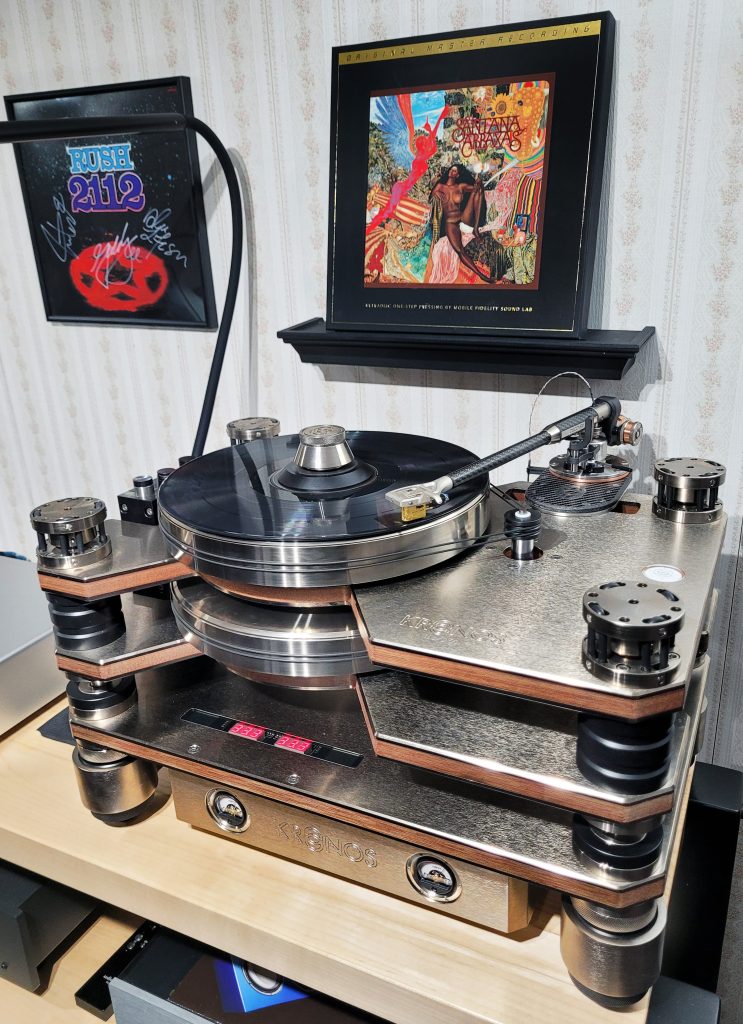
In fact, it is possibly the most significant performance increase I've heard in my system since the introduction of my world-class Von Schweikert Audio ULTRA 9 loudspeakers. As recently as last week's episode, I referred to the degree to which I have come to take for granted their ability to render complex, realistic textures, among other attributes. This magnificent arm's contributions, with its unparalleled world-class performance, has allowed them to render an even clearer, more engaging, complex, refined, and authentic level of performance than ever before, yet again showing their own remarkable proficiencies.
Now before anyone decides to pile on the hysterical hyperbole wagon, please understand two things. First, though NO ONE can have heard EVERY tonearm in every possible installation, over my five decades in this industry, I've heard shite loads—entirely too many to name in any comprehensive manner. And I'll venture to suggest that it would represent an order of magnitude more exposure than most audiophiles, and all but a handful of other veteran reviewers, have had the opportunity to experience. That said, this new KRONOS Discovery RS tonearm presents a more uncolored, articulate, concise view into my recordings than any other tonearm in my experience, at any price!
Secondly, and perhaps more importantly, this new Discovery RS tonearm is SO exceptional that it is not leaving my system. I have taken advantage of the opportunity that KRONOS is offering for a limited time and accepted a ridiculously fair trade-in price on my Black Beauty. While this offer currently extends to the Helena and original Kronoscope arms as well…it won't be available much longer, so you procrastinators out there, don't miss out.
Discovery RS tonearm
Price: $24,000
Kronoscope RS tonearm
Price: $14,000
KRONOS
US Distributor
GTT Audio
908.850.3092
All photographs by Greg Weaver, except as noted.






